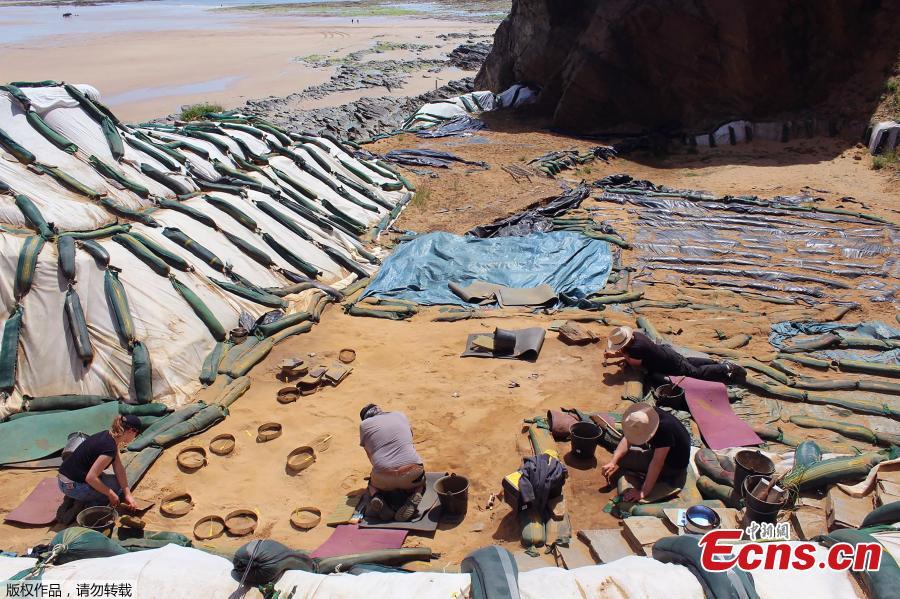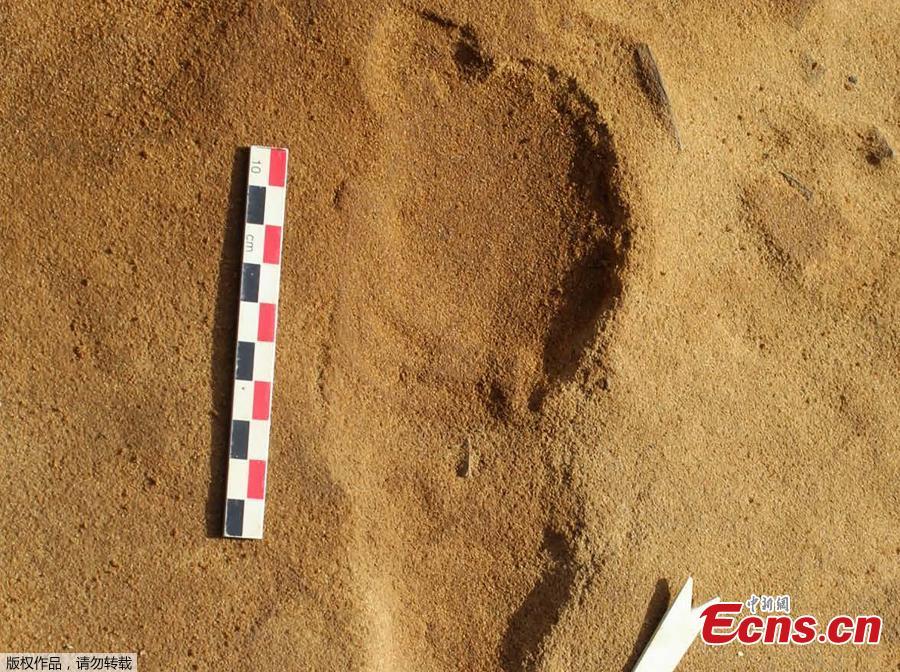
This image shows the excavation site of a footprint layer in Le Rozel, France. Like modern humans and primates, our closest evolutionary cousins Neanderthals are thought to have lived in groups, but their size and composition have been difficult to infer from archeological and fossil remains. Now though, scientists have reported the discovery of 257 footprints along the Normandy shore in France that were immaculately preserved over 80,000 years, offering major new clues into the social structures of its pre-historic inhabitants.(Photo/Agencies)

This image shows a Neandertal footprint discovered at the archeological site in Le Rozel, France. Like modern humans and primates, our closest evolutionary cousins Neanderthals are thought to have lived in groups, but their size and composition have been difficult to infer from archeological and fossil remains. Now though, scientists have reported the discovery of 257 footprints along the Normandy shore in France that were immaculately preserved over 80,000 years, offering major new clues into the social structures of its pre-historic inhabitants. (Photo/Agencies)























